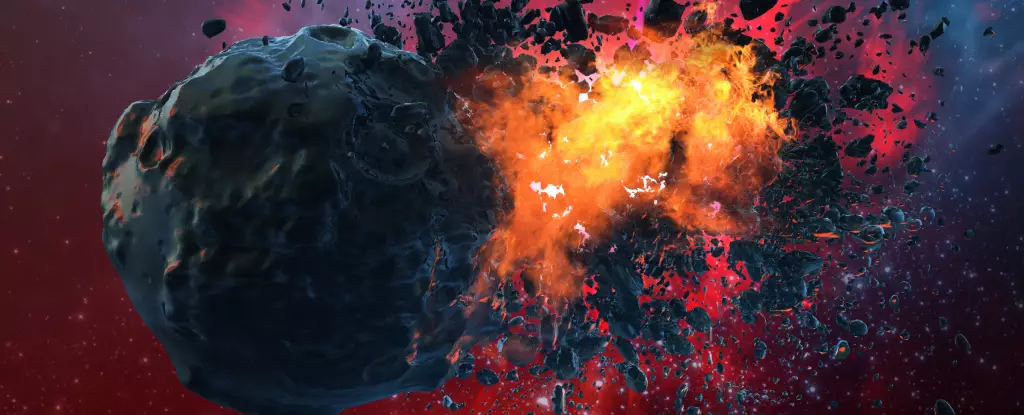In a universe teeming with celestial bodies, the threat of incoming asteroids remains a pressing concern for humanity. A recently identified asteroid, dubbed 2024 YR4, has raised alarms due to a projected 3.1 percent chance of impacting Earth on December 22, 2032. Despite this seemingly ominous statistic, experts urge a cool-headed approach and highlight humanity’s advancements in planetary defense strategies. This article delves into the potential risks and preventive measures, illuminating our capabilities to avert cosmic calamities.
Asteroids, while often viewed as simply pieces of space debris, have the potential to cause catastrophic damage, especially if they are large enough to strike densely populated areas. The most notorious event was the asteroid impact that is believed to have been a significant factor in the extinction of the dinosaurs. Understanding the mechanics of such impacts is not only essential for planetary safety but also crucial for making informed decisions regarding prevention strategies.
The emergence of 2024 YR4 into scientific scrutiny led to an increase in its projected chance of impact—a situation that naturally raises public concern. However, experts like Richard Moissl from the European Space Agency emphasize that the odds of such an impact can fluctuate based on ongoing observations and analyses. The likelihood may increase as new data is received, but it is crucial to keep perspective; the majority of potential asteroids miss Earth entirely.
In confronting potential asteroid threats, a spectrum of defense strategies has emerged, showcasing humanity’s innovative spirit and scientific prowess. To date, the most successful strategy was employed during NASA’s Double Asteroid Redirection Test (DART) in 2022. This remarkable mission involved crashing a spacecraft into the 160-meter-wide Dimorphos asteroid, successfully altering its orbital path. Such kinetic impact strategies demonstrate that humanity can change the trajectory of incoming asteroids, albeit requiring considerable foresight and timely action.
The concept of a “gravity tractor” represents another ingenious yet non-invasive approach. A specially designed spacecraft could hover near the asteroid, employing its gravitational pull to generate a gentle nudge away from Earth. This method would necessitate a prolonged presence near the asteroid, allowing for gradual alteration of its trajectory.
In addition to these methods, scientists have considered employing advanced propulsion systems to gently push asteroids off course. By utilizing thrusters that emit a steady stream of ions, a spacecraft could provide a subtle but effective means of deflection without physically contacting the asteroid—similarly to the gravity tractor but with a different technological finesse.
When contemplating drastic measures, the hypothetical use of nuclear devices often comes to the forefront of discussions. Unlike Hollywood’s dramatized portrayals, experts suggest that a nuclear weapon would likely be detonated in proximity to, rather than on, an asteroid to maximize efficacy while minimizing fragmentation risks. Such a move comes with substantial risks, including the possibility of the impact sending dangerous debris toward Earth instead of safely diverting it.
Truly, this option should remain a last resort, reserved for exceptionally large asteroids that pose an imminent threat. The ethical ramifications and international regulations surrounding the deployment of nuclear technology in space complicate implementation, highlighting the importance of diplomatic and collaborative approaches among nations.
In scenarios where the odds shift unfavorably and impact becomes a likely outcome, preparedness is paramount. Experts assert that, based on current projections, the asteroid in question is not categorized as a “planet killer” and poses limited risk—most likely threatening urban areas. The potential for impact necessitates readiness protocols, including evacuation plans for potentially affected regions.
While the prospect of an incoming asteroid can be daunting, the scientific community’s commitment to planetary defense, coupled with advancements in technology, offers a comforting reassurance. As Moissl aptly puts it, with over seven years remaining until the projected date of impact, there is ample time for coordinated global action and contingency planning.
Ultimately, the challenge of defending against asteroid threats transcends individual nations and relies on global collaboration. As the scientific community continues to develop and refine defense methods, the responsibility for decisive action will lie with world leaders who must weigh recommendations against potential risks. With a robust 97 percent chance that 2024 YR4 will not collide with Earth, ongoing vigilance and proactive measures may be our best bet in navigating the complexities of our cosmic neighborhood.


Leave a Reply